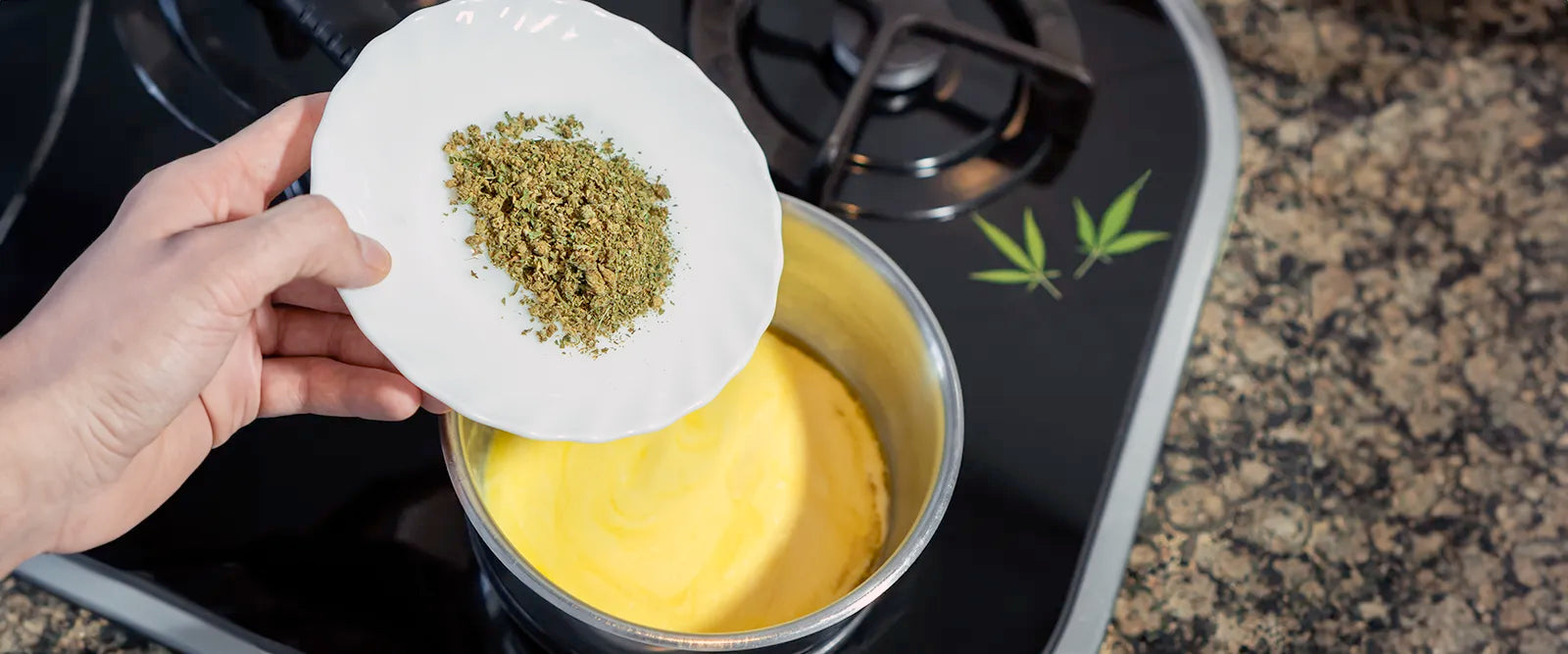FREE SHIPPING
ON ORDERS $100+

Decarboxylation, or "decarbing," might sound like a complex process, but it's an essential step for cannabis enthusiasts looking to unlock the full potential of their stash. Whether you're into making edibles, oils, or just optimizing your cannabis for medicinal use, understanding and applying decarboxylation is key.
In this guide, we'll dive into the world of decarboxylation, answer some burning questions, and round up the best decarboxylators for home use in 2024.
Decarboxylation is a chemical reaction that removes a carboxyl group from a molecule, releasing carbon dioxide (CO2). In the context of cannabis, decarboxylation converts THCA (Tetrahydrocannabinolic acid), which isn't psychoactive, into THC (Tetrahydrocannabinol), the compound known for its psychoactive effects.
Similarly, it converts CBDA into CBD. This process is essential because it activates the cannabinoids in cannabis, making them available for your body to use.

Absolutely! If you're planning to consume cannabis in any form other than smoking or vaping, decarbing is a must. This process ensures that you're getting the most out of your cannabis, especially if you're using it for medicinal purposes. Without decarbing, the cannabinoids in your cannabis won't be as effective, meaning you could be missing out on its full benefits.
Ah, the smell of decarbing – it's unmistakable. If you're using an oven to decarb your weed, be prepared; it might just stink up your entire neighborhood. The process releases strong odors that can be hard to contain, especially in a kitchen setting. This is something to consider if discretion is important to you or if you're trying to keep your cannabis use on the down-low.
On the flip side, using a dedicated decarbing machine changes the game entirely. These devices are designed to be almost odorless, thanks to their sealed, efficient heating systems. So, if you're worried about the smell or just want to keep things discreet, investing in a decarboxylator machine is a smart move. Not only do you get precise, efficient decarbing, but you also keep those tell-tale cannabis aromas under wraps.
If odor is an issue, don't miss this article: How to Remove Weed Smell: Methods That Actually Work
Another solid more name brand choice is the Ardent FX Mini 3-in-1 which some say is even better (check price).
Read more:
Best Cannabis Decarboxylators 2024: Top 3 Reviews
The ideal temperature for decarboxylation is a hot topic among cannabis enthusiasts. However, most agree that a temperature range of 220-245°F (104-118°C) is optimal. This range effectively activates the THC and CBD in cannabis without degrading the terpenes that contribute to its aroma and flavor.

The duration of decarboxylation can vary depending on the method and equipment you're using. Typically, when using a decarboxylator machine, the process takes about 30-45 minutes. If you're using an oven, it might take a bit longer, around 30-60 minutes, to ensure even heat distribution and full activation.
Decarbing weed in an oven is straightforward but requires attention to detail. Here's a quick guide:
While ovens are usually the easiest choice, even with some reporting uneven heating issues. The biggest drawback is the cannabis odor which could easily be noticed even by neighbours. Imagine smelling someones cooking or freshly baked bread in a neighbourhood or apartment building, but instead it is a primo skunky weed odor. Not the most discreet choice.

While it's possible to decarb weed in a microwave, it's not recommended. Microwaves can heat unevenly and might not reach the temperatures required for effective decarboxylation. Plus, there's a higher risk of overheating and ruining your cannabis.
Yes, grinding your herb before decarbing is a good idea. A coarse grind increases the surface area, ensuring more even heat distribution and more efficient decarboxylation.
Measuring potency accurately at home can be challenging without lab equipment. However, starting with known quantities of cannabis and understanding its THC percentage can help estimate the potency of your final product. Keep detailed notes for more consistent results.
If you keep the temperature below 314°F (the point where THC starts to vaporize), you're likely in the clear. Successful decarboxylation leaves your herb golden brown, with a nutty, earthy aroma. If it matches this description, you've probably done it right.
Absolutely, yes. Decarbing before infusing is crucial for potent edibles. Infusion processes typically don't reach temperatures high enough to decarb, meaning your end product could end up less effective. Decarbing turns the non-psychoactive acids in your cannabis into the active compounds you're after, ensuring your edibles have the desired effect. Always decarb first to unlock the full potential of your cannabis.
Navigating the world of cannabis decarboxylation can feel like a science project, but with the right tools and knowledge, it becomes an exciting journey into unlocking the full potential of your herb. Whether you're a seasoned chef of edibles or a curious newcomer ready to explore, understanding the ins and outs of decarbing is key to achieving the potency and effects you desire.
Armed with the answers to these common questions and a list of the best decarboxylators for 2024, you're well on your way to elevating your cannabis experience. Remember, the magic of a perfect edible or infusion starts long before the kitchen — it begins with the transformative power of decarboxylation. Happy decarbing!
Leave a comment